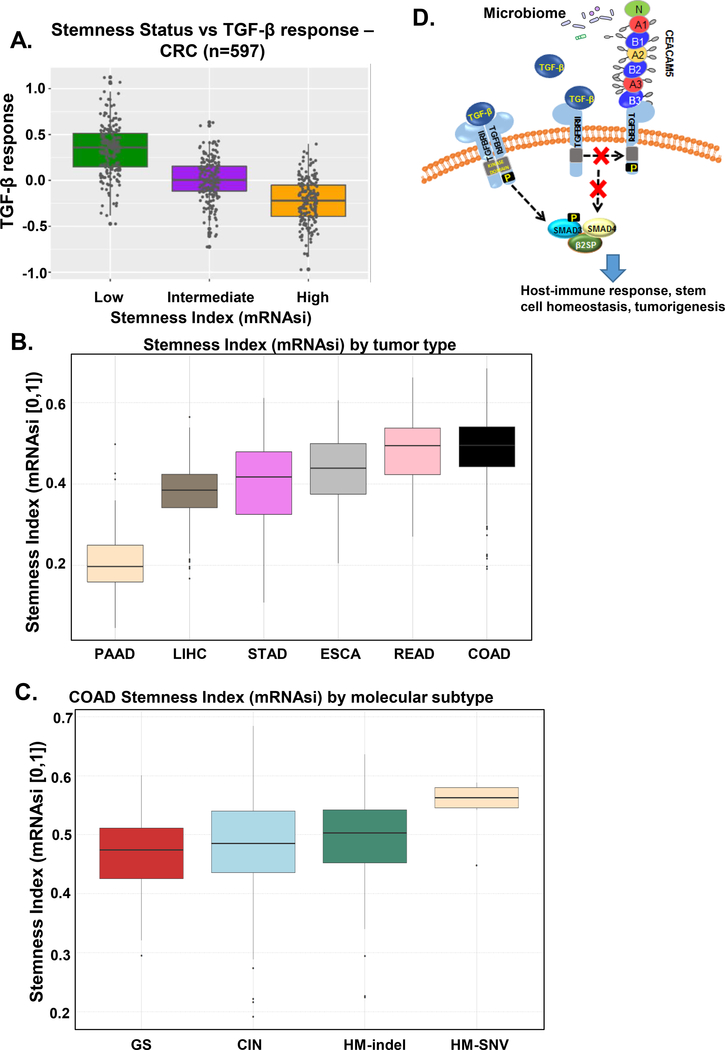Figure 3.
TGFB signaling and stemness in CRC. A) Relationship between TGFB signaling activity (TGFB response) and stemness in the CRC cohort from TCGA. Samples were stratified based on the Stemness status, defined by ranking the samples by their RNA-based Stemness Index (mRNAsi) and dividing the samples in the top, intermediate, and bottom thirds. B) Stemness ranking of gastrointestinal cancers from TCGA. Cancers were ordered from low to high stemness index. COAD, colorectal adenocarcinoma; ESCA, esophageal carcinoma; LIHC, liver hepatocellular carcinoma; PAAD, pancreatic adenocarcinoma; READ, rectal adenocarcinoma; STAD, stomach adenocarcinoma. C) Stemness ranking for COAD molecular subtypes. CIN, chromosomal instability; HM-SNV, hypermutated-single-nucleotide variant predominant; GS, genomically stable; HM-indel, hypermutated-insertion deletion mutation. D) Model showing the proposed mechanism of CEACAM inhibition of the TGFB pathway in regulating host-immune response, stem cell homeostasis, and tumorigenesis.

